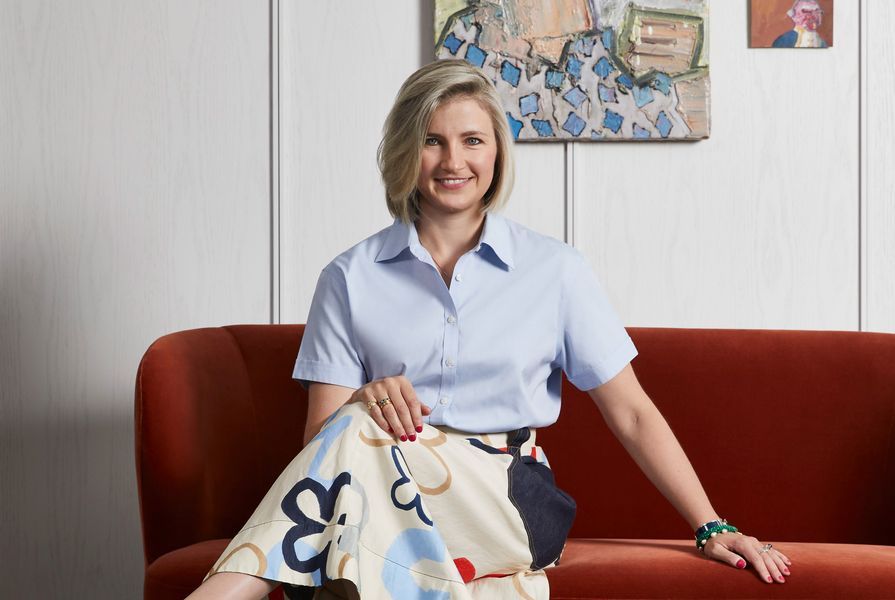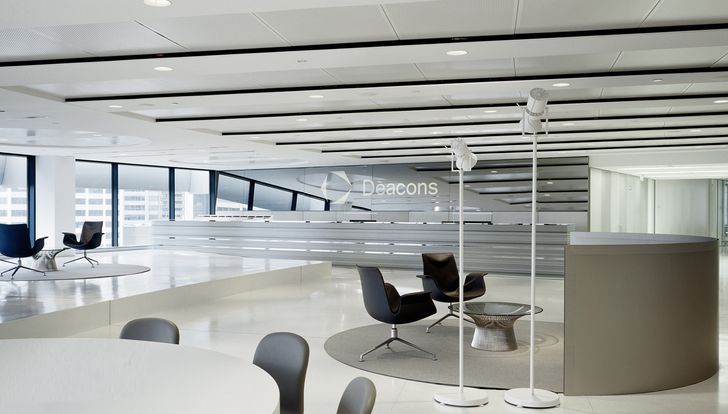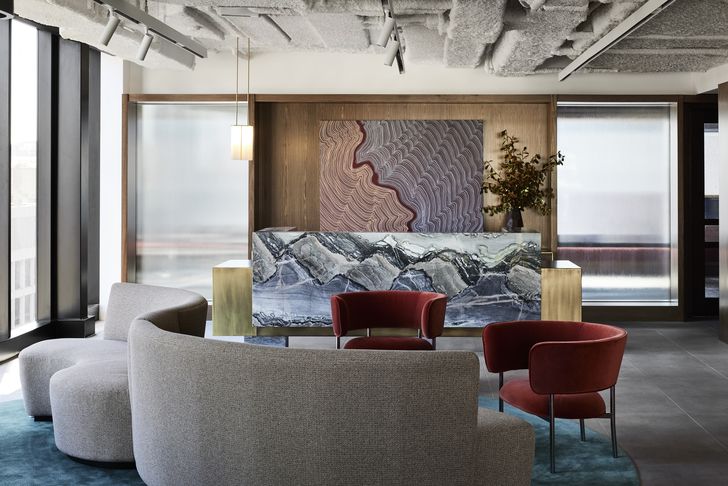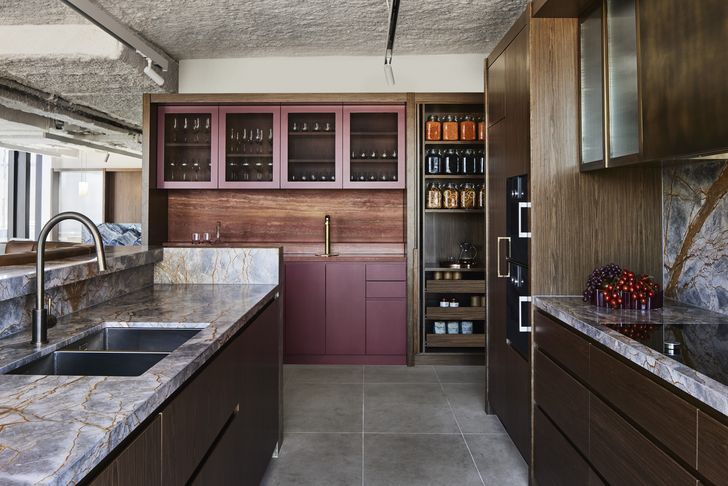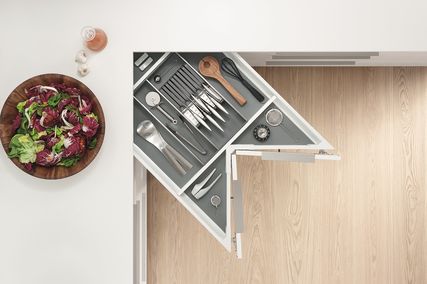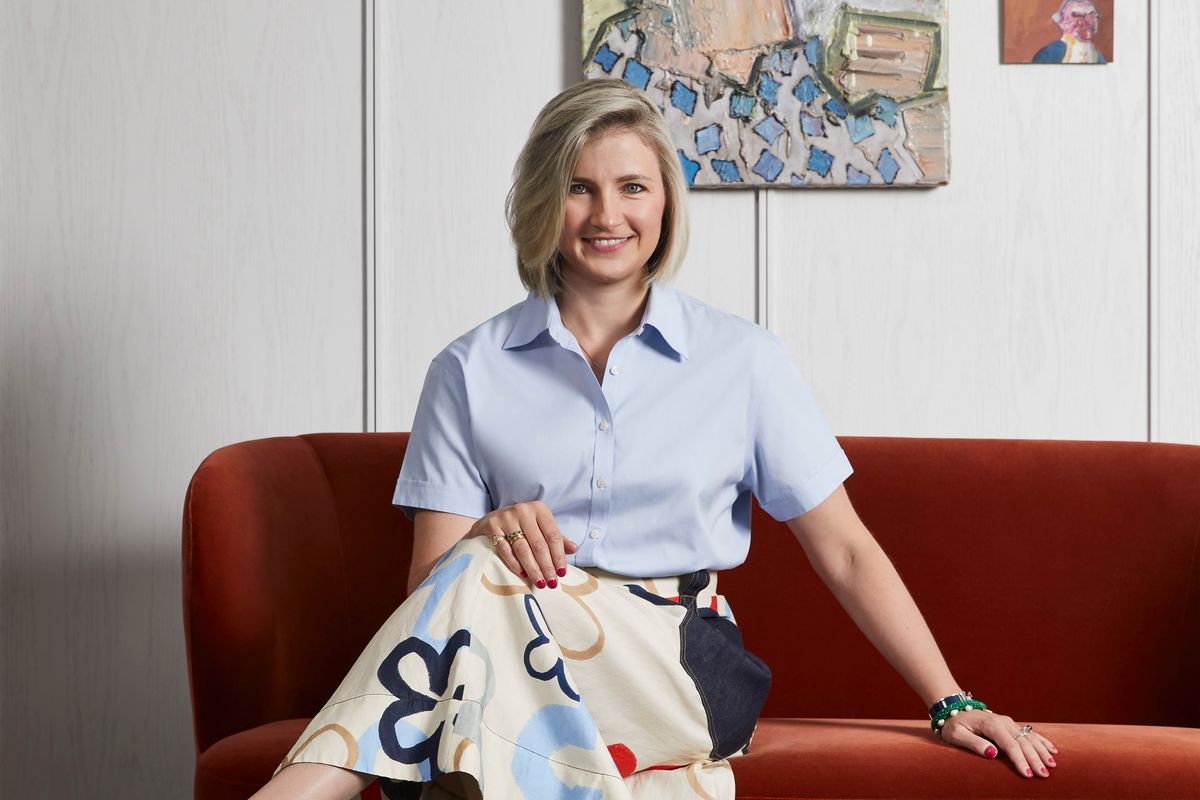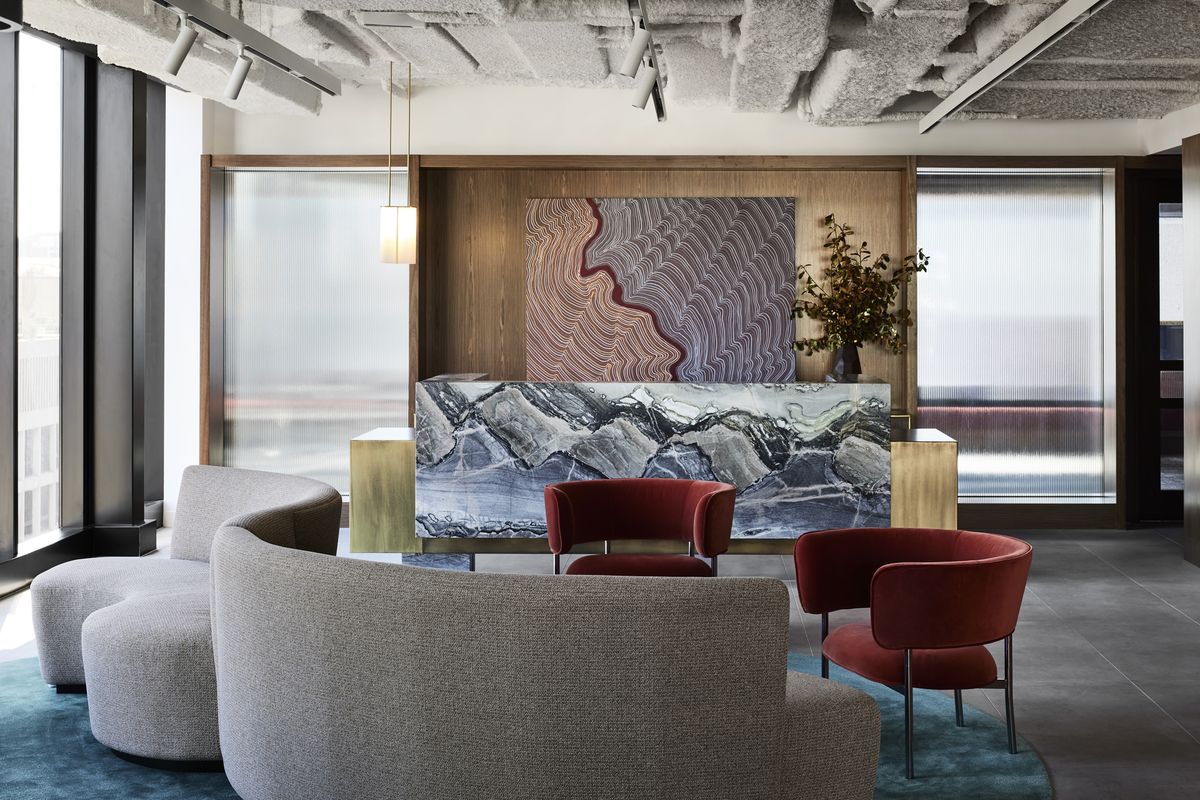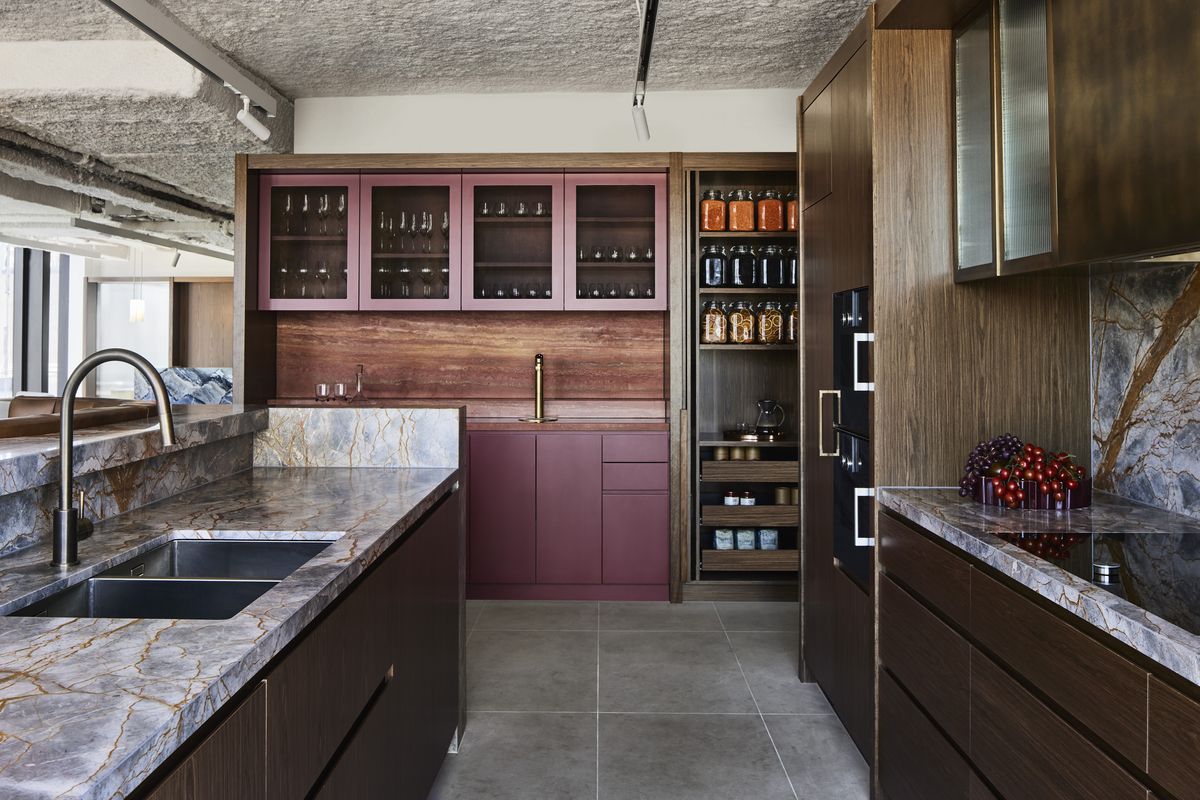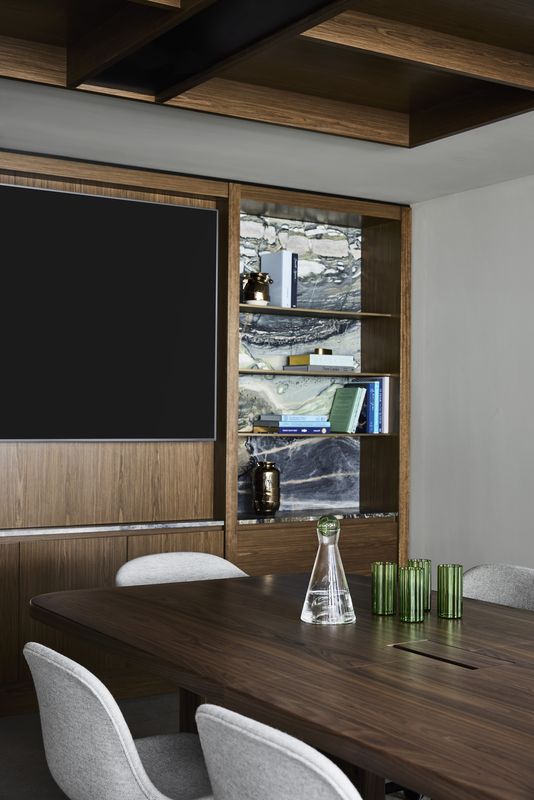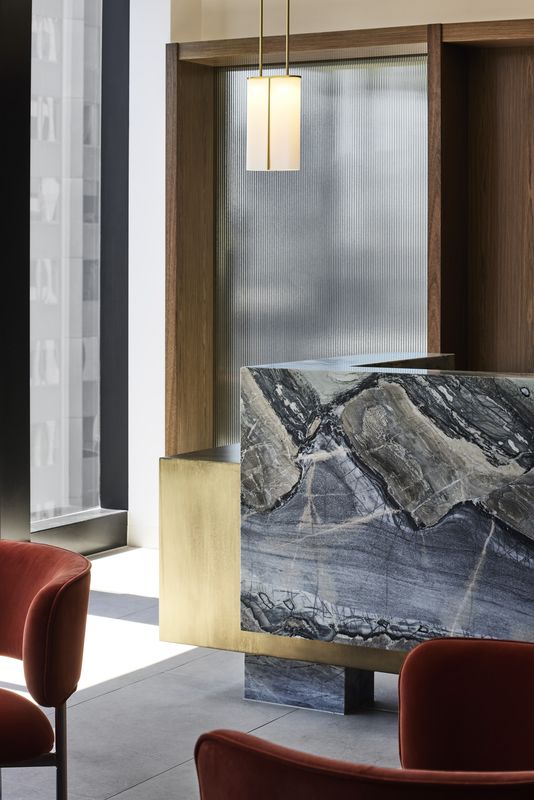A career in design seemed destined for Alex Hopkins, who grew up playing in residential display suites. She recalled many a Saturday morning helping her dad – a property developer – at work. Admittedly, she can’t be certain about the amount of help she actually provided, but she has fond memories of wandering around the work floor of Hayball Leonard Stent (now Hayball) and admiring the eye-catching features on show.
“I was always passionate about creative arts subjects at school. I knew my career path would be in architecture or interiors. I was very fortunate to know my calling at a young age,” she said.
Deacons (now Norton Rose Fulbright) Sydney office by Carr.
Image: Earl Carter
After graduating from Melbourne’s Monash University with a Bachelor of Interior Architecture, Hopkins retained a position at the renowned architecture and interior design practice, Carr. She delved into her first project in 2007 and was a key member of the team responsible for designing and delivering a workspace in Sydney for the law firm Deacons (now Norton Rose Fulbright).
Despite being only a junior interior designer at the time, Hopkins described having an active role in the project.
“I was very fresh. I was the youngest team member on the project,” she said. “I was granted the opportunity to design some spaces, attend client meetings and participate in site services as well as contribute to the documentation of the project. At Carr, if you wanted to go in a certain direction or take on more responsibilities, you were always provided the chance to do so.
“It was a very fun and memorable time, especially for an ambitious 20-year-old designer.”
Hopkins said Carr had a well-defined process and framework the team followed, which led them to earn several accolades.
In the years following, she took on roles at Hassell and Jackson Clements Burrows Architects, before founding Studio Tate in 2014. Hopkins stated her design approach has been informed and shaped by every firm she has worked in, with each practice providing her with a new perspective on design. She continues to carry each lesson with her, through all her subsequent endeavours.
Since establishing Studio Tate, she has worked on numerous projects, many of which have garnered critical acclaim. Some notable projects include Armadale Residence II, Holism Retreat, Hotel Chadstone Melbourne M Gallery, Toby’s Estate Darling Square, PDG Corporation Head Office, and Mecca Customer Support Head Office.
Riverlee Workplace by Studio Tate.
Image: Sharyn Cairns
Coincidentally, Hopkins’s latest project, just like her first, also involved creating a workspace. Her firm, Studio Tate was tasked with the challenge of re-purposing a former plant room into a collaborative work environment for Melbourne-based property group, Riverlee.
The brief was to conceive a purposefully designed space that would embody the identity of the organization, encourage workplace collaboration, foster productivity and promote workplace wellbeing. The result is a beautifully crafted and functional office space, with the design highly considerate of staff needs.
Riverlee Workplace is a vibrant, people-centric headquarters for Melbourne-based property group, Riverlee.
Image: Sharyn Cairns
When comparing her design approach on the first project 16 years ago to her processes now, Hopkins said her projects have evolved to become increasingly personalized and centred around a narrative. Essential to the process is embracing and developing an aesthetic that aligns with the individuality of the client and is relevant to their ethos and identity.
While creating a tailored narrative for every project can be challenging, Hopkins said it is also when the real fun begins.
“We strive to articulate a creative narrative that is unique to each project. This narrative helps the project team to make the right decisions when it comes to aesthetics.”
Of all the lessons she has learned along the way, Hopkins said it was a piece of knowledge that her first employer Sue Carr shared with her that has always stuck in her memory.
“Sue taught me an important lesson: mistakes will happen. It is how you manage the resolution that is remembered,” Hopkins said.
“In the early days of starting a practice, you do put a lot of pressure on yourself and your team to avoid making mistakes. Of course, this is always the aim, however, in the great game of life, mishaps do occur. It is how you engage with your client to resolve that is key.”
According to Hopkins, equally as important is the ability to take the time to appreciate and find joy in the creative process, without taking things too seriously.

